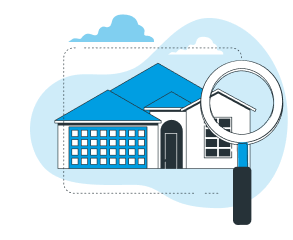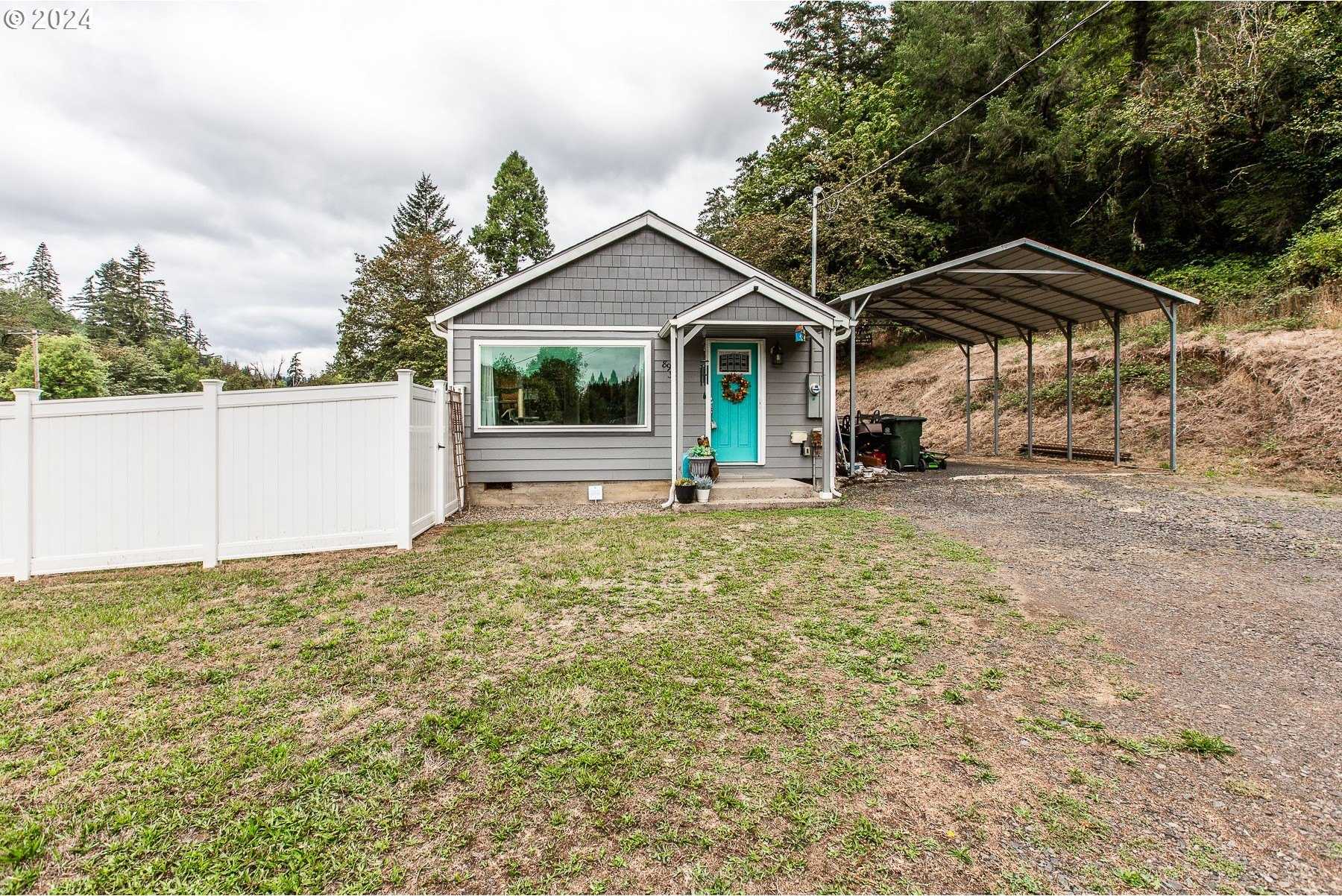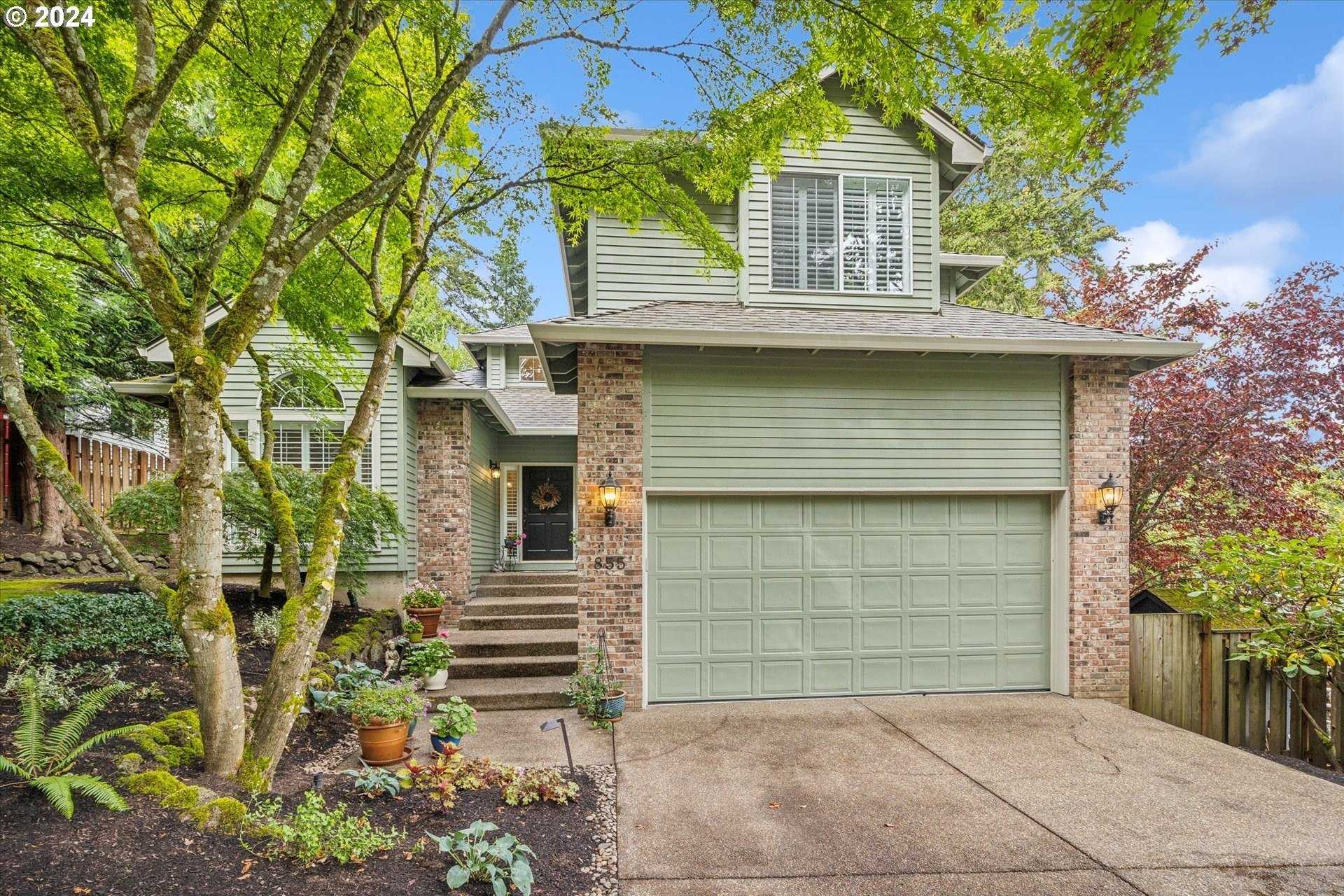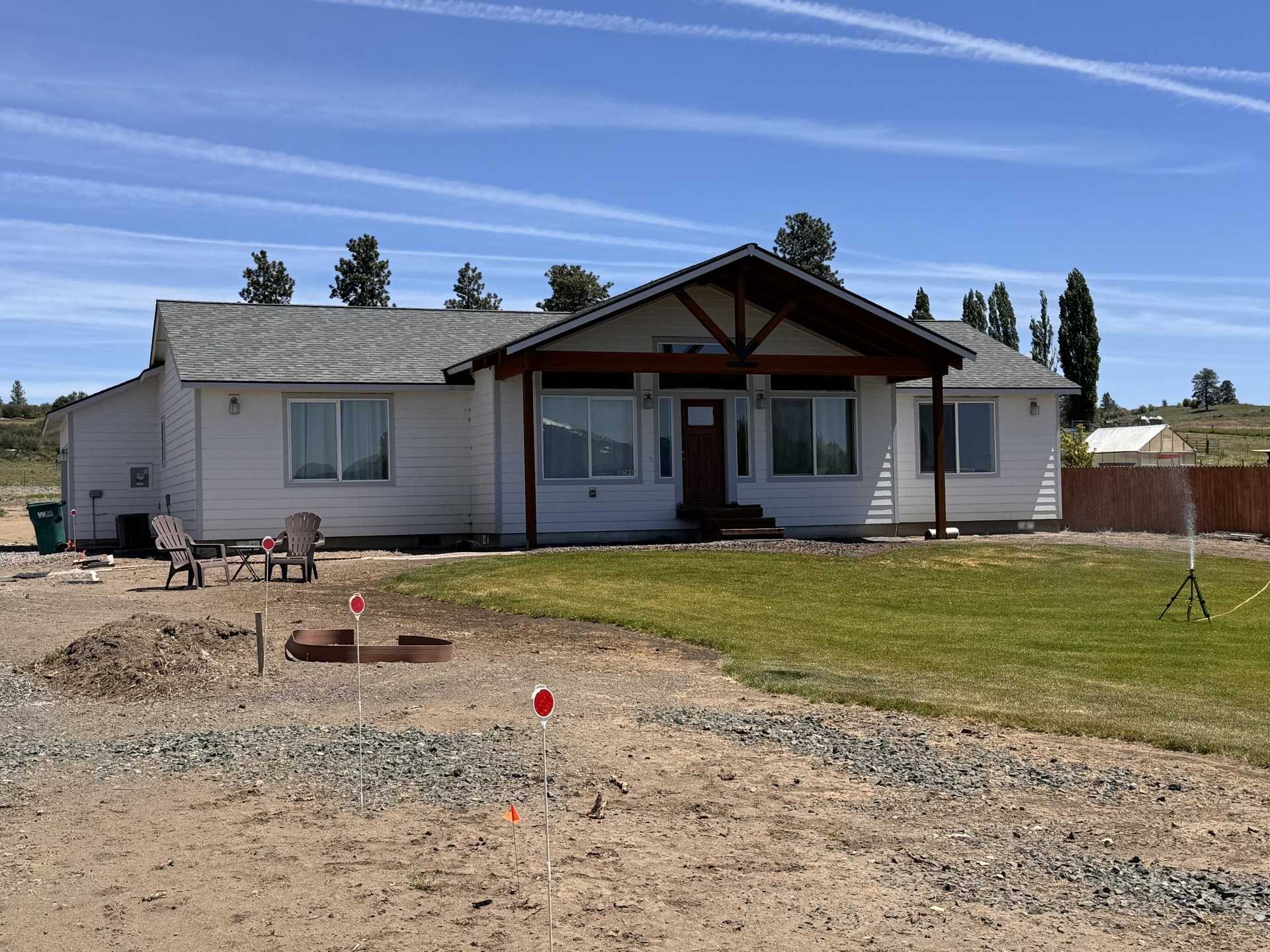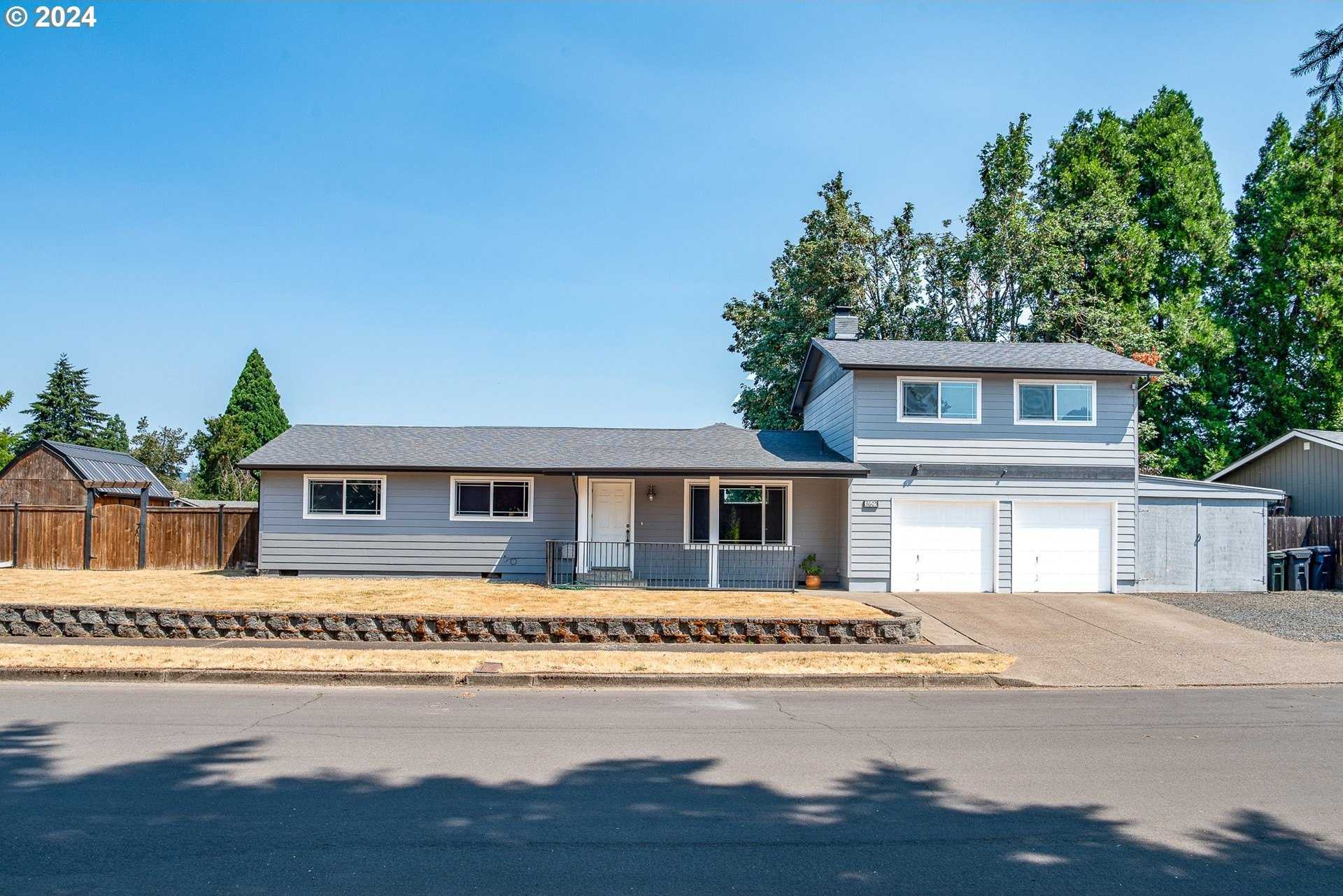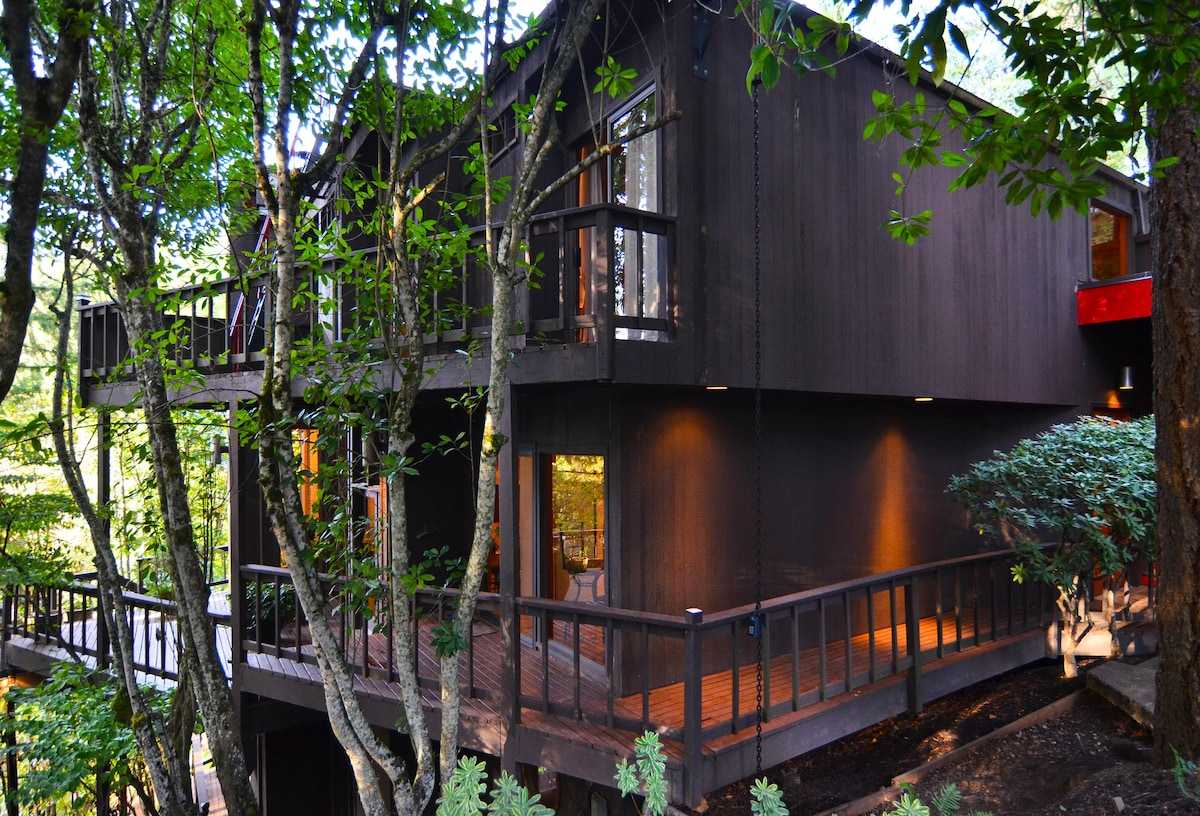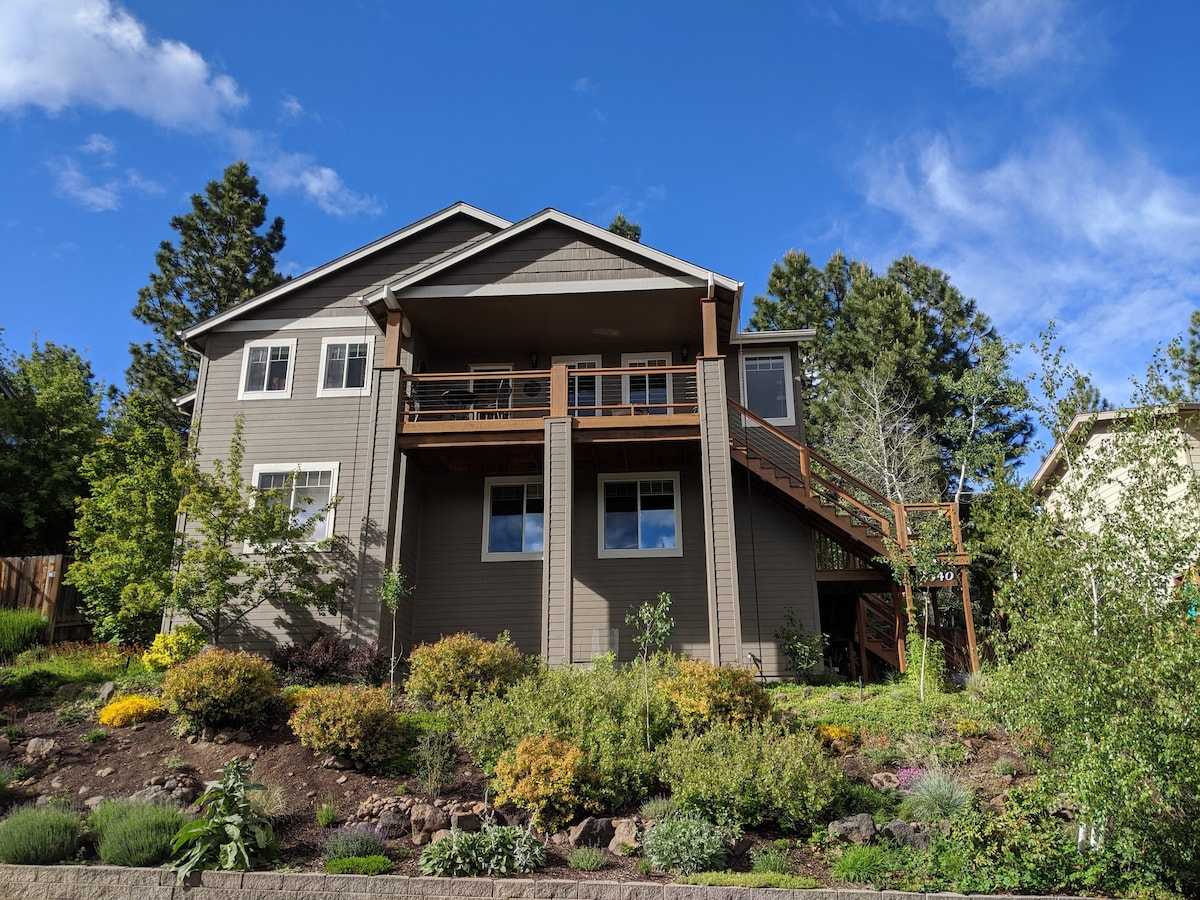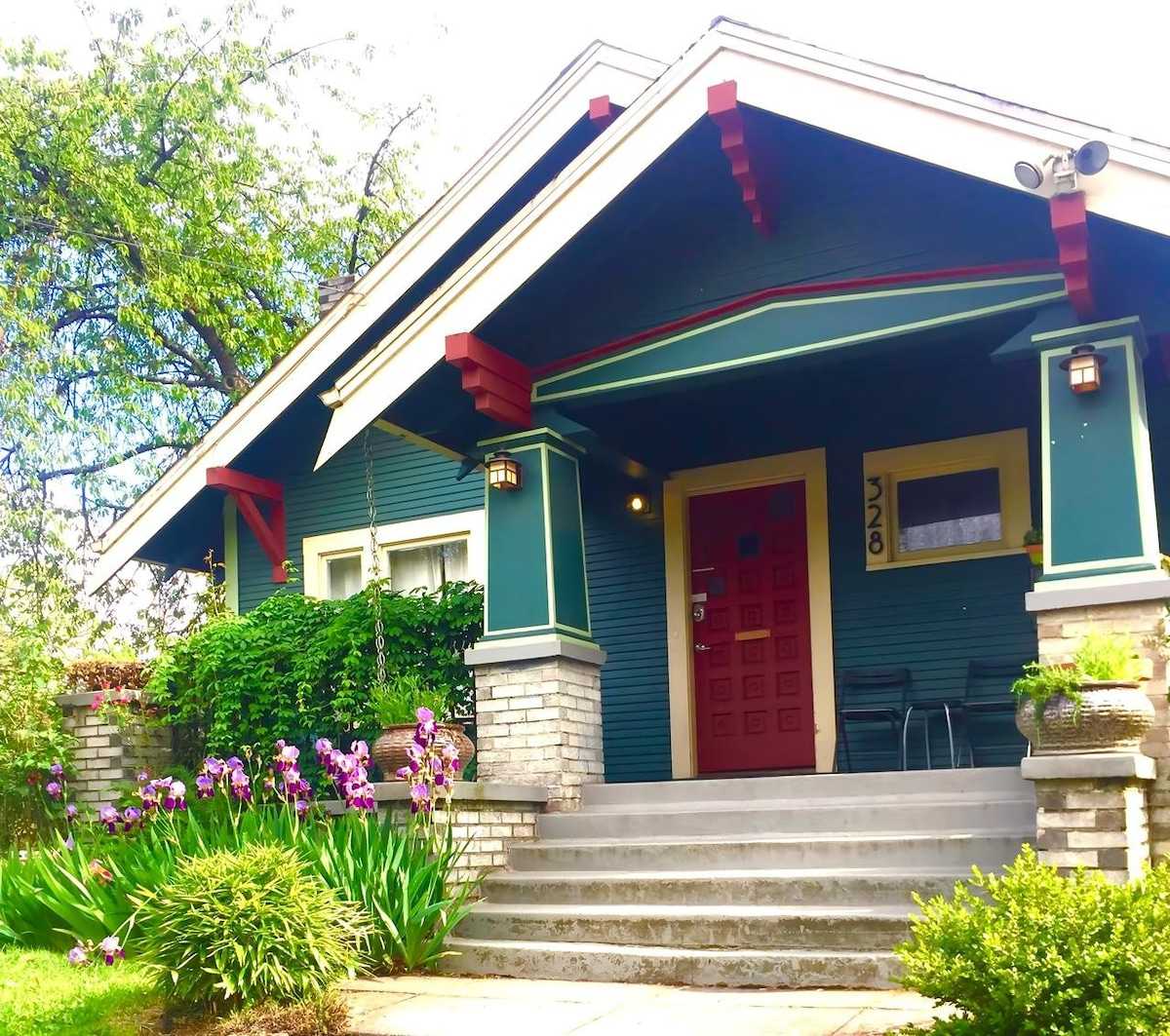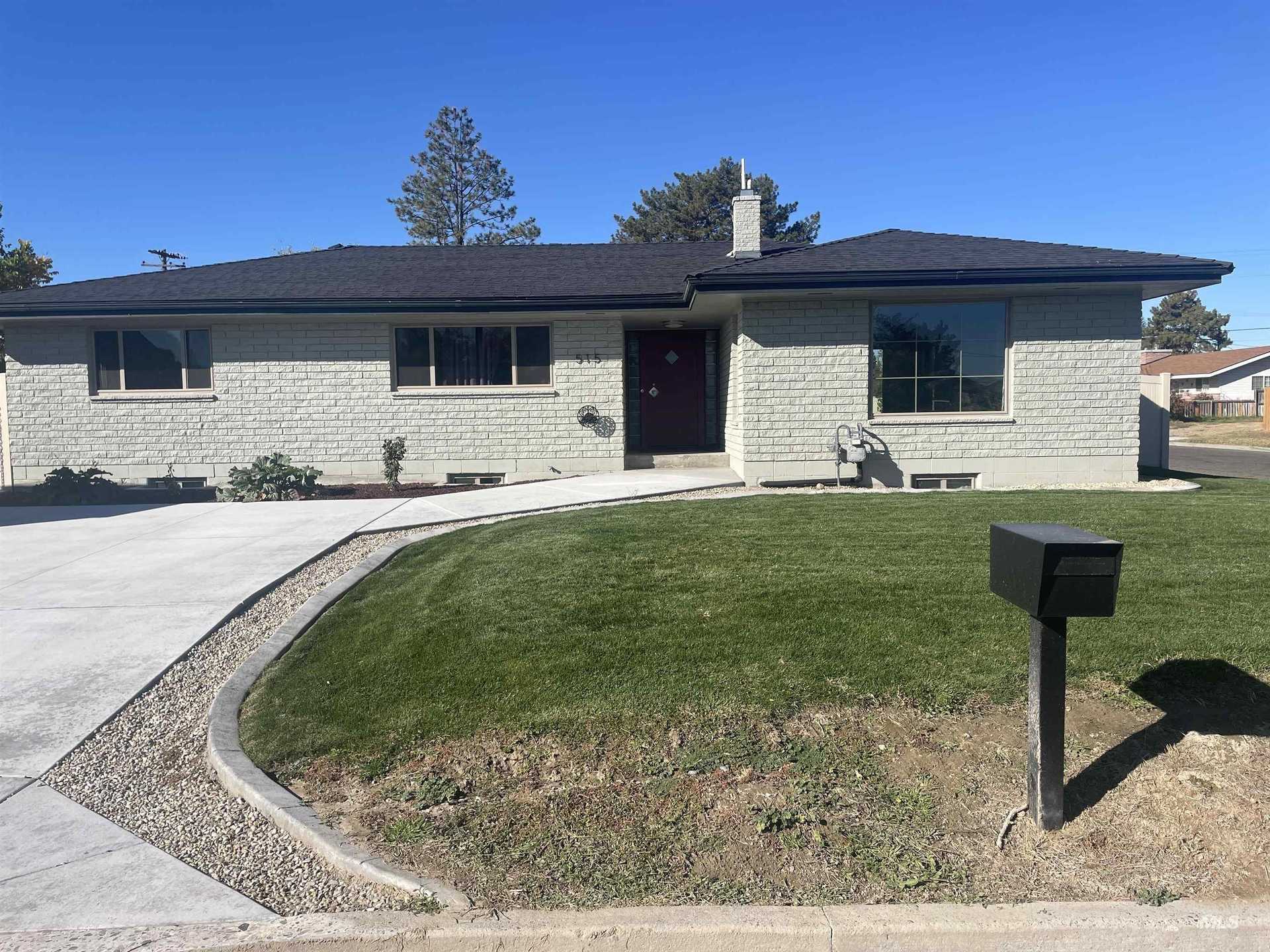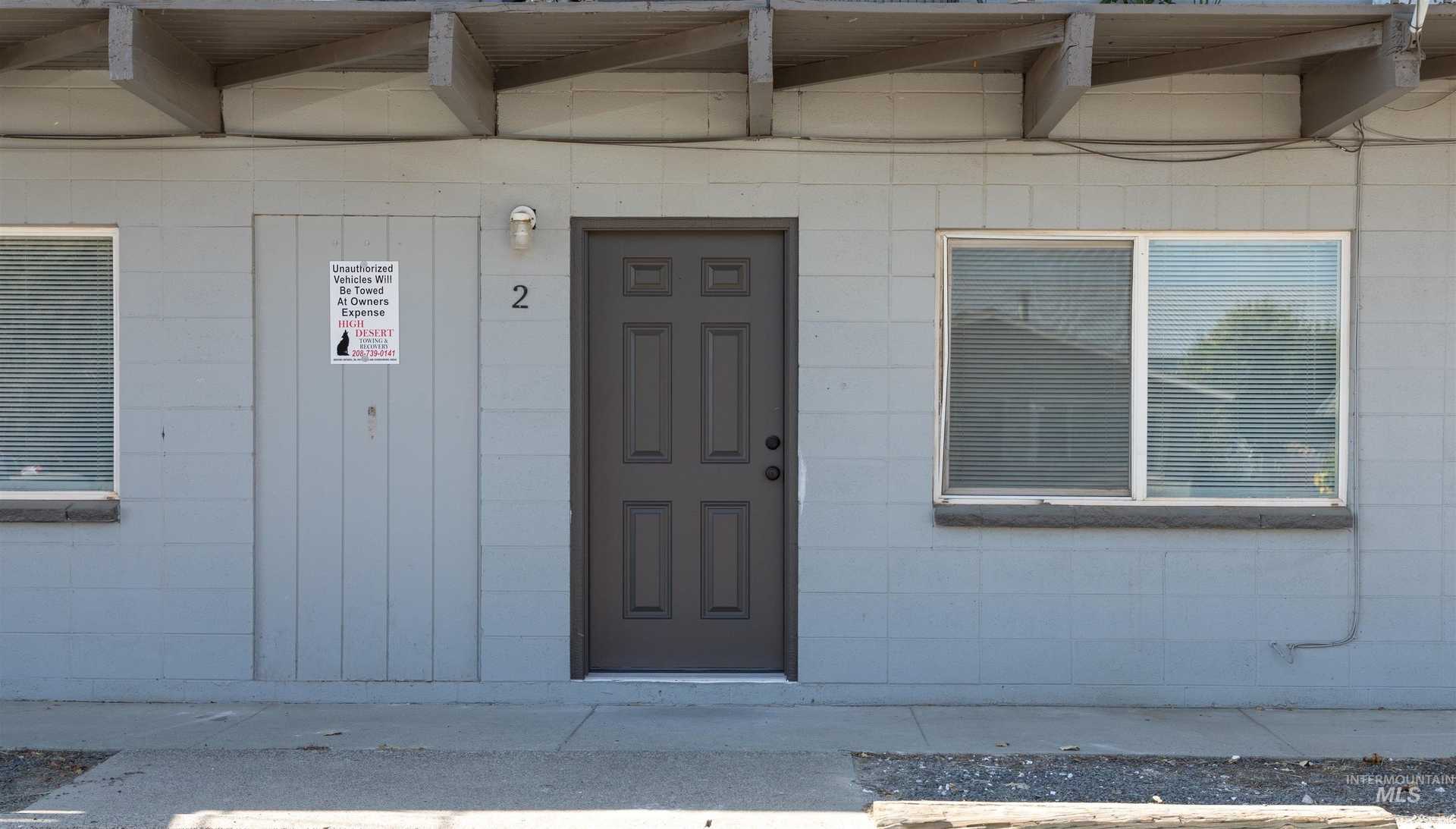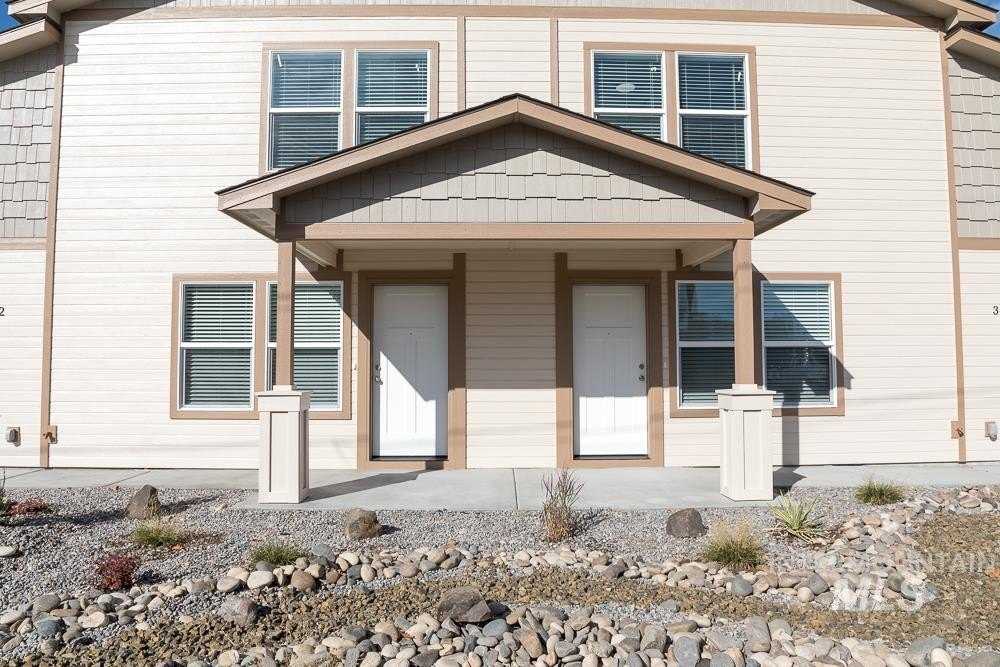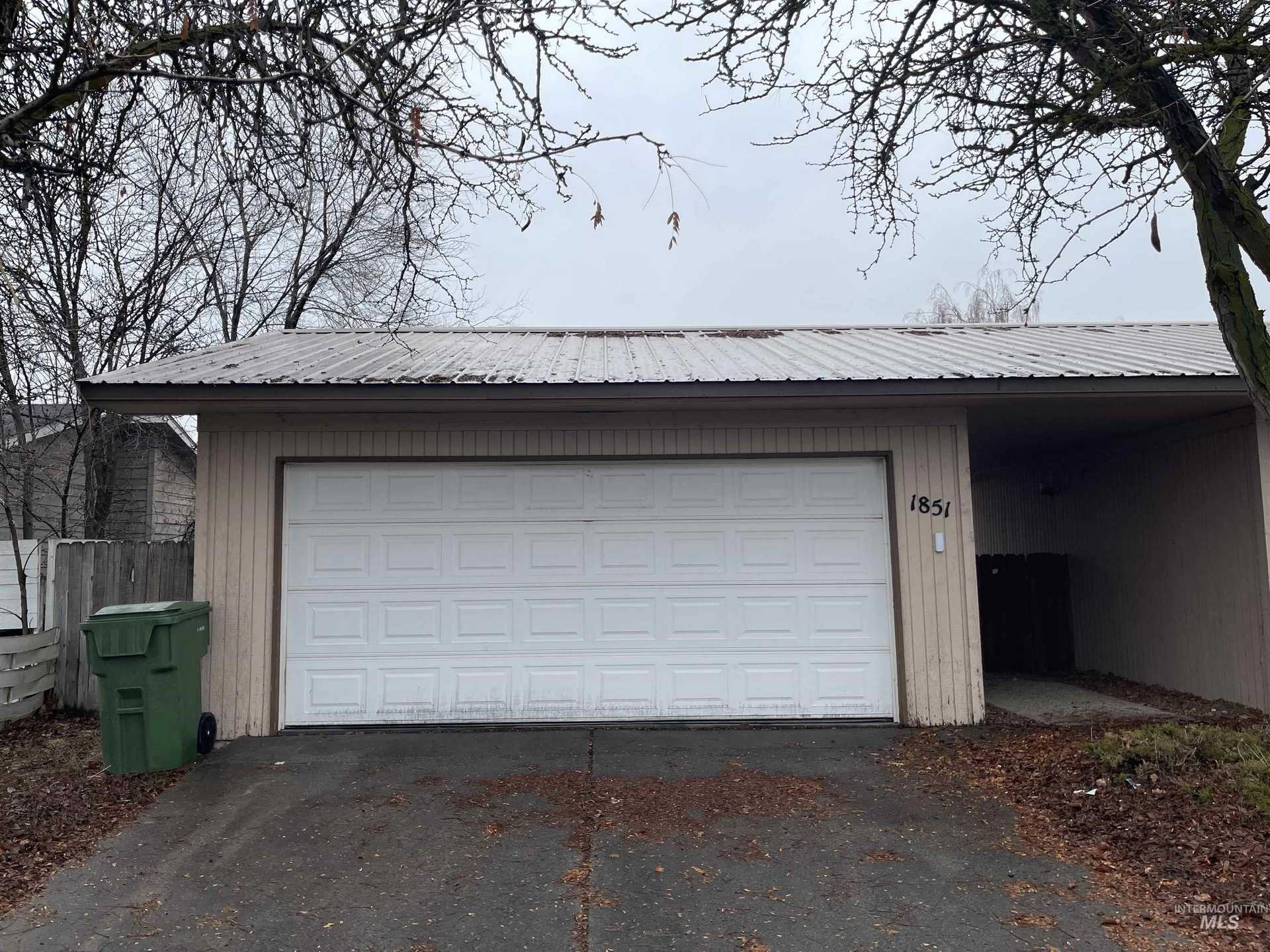
Oregon Real Estate Market Performance
Nestled in the Pacific Northwest, Oregon's housing market presents a unique opportunity for real estate investors. Known for its diverse landscape of forests, mountains, farms, and beaches, Oregon's appeal is not just in its natural beauty but also in its robust real estate sector. As of 2024, the Oregon housing market is characterized by a competitive yet promising landscape for investors.
The market trends show a steady increase in property values, with a 5.6% rise in median home prices over the past year. Portland, Oregon's largest city, continues to be a hotspot with an 8.4% year-over-year growth in housing prices. This growth is attributed to Oregon's growing economy, influx of new residents, and limited housing inventory, making it a potentially lucrative market for investors.
For those looking to invest, it's crucial to understand the dynamics of local markets within Oregon. Cities like Eugene and Salem are witnessing a surge in demand, particularly in the residential sector. Rental properties in these areas are especially attractive, with rental yields averaging around 4.3%. Moreover, the introduction of new development projects across the state indicates a future expansion of the housing market, promising further opportunities for growth and investment.
Investing in Oregon's real estate requires a strategic approach, considering factors such as location, property type, and market trends. With its stable economy, increasing population, and diverse landscape, Oregon offers a compelling mix for real estate investors aiming to capitalize on long-term growth and profitability.
Seller’s market
Homes for Sale in Oregon
Find PropertiesDrain, OR 97435Drain
Lake Oswego, OR 97034McVey-South Shore
Chiloquin, OR 97624Chiloquin
Springfield, OR 97478Springfield
Oregon Homes for Sale
As we step into 2024, the market for homes for sale in Oregon presents a diverse and attractive landscape for potential buyers and investors. Currently, Oregon boasts a rich inventory of homes, with over 15,000 properties listed for sale, catering to a wide range of preferences and budgets. The median listing price for homes in Oregon now stands at around $490,000, reflecting the state's growing appeal and the high quality of living it offers.
The market is particularly vibrant in cities like Portland, where the median listing price hovers around $550,000. However, for those seeking more affordable options, smaller towns such as Medford and Grants Pass offer homes at median prices closer to $360,000, providing opportunities for a broader spectrum of buyers.
Luxury real estate is another segment experiencing growth in Oregon. High-end homes, especially those with scenic views and custom designs, are seeing increased interest, with listing prices often exceeding $1.2 million. These properties are particularly prevalent along the scenic Oregon coastline and in affluent neighborhoods near metropolitan areas.
Oregon's market also caters to eco-conscious buyers, with a significant portion of homes featuring sustainable designs and green technologies. This aligns with Oregon's reputation for environmental stewardship and appeals to a growing segment of eco-aware buyers.
In summary, Oregon homes for sale offer a wide array of choices, from affordable family homes to luxury estates, all set in a state known for its natural beauty and quality of life. For buyers and investors alike, Oregon's real estate market is ripe with opportunities, each promising a blend of lifestyle and investment potential.
Start your investment property search
Use analytics to find lucrative traditional or Airbnb properties in a matter of minutes.

Best Neighborhoods in Oregon for Buying Investment Property
In 2024, Oregon's diverse landscape continues to offer a range of attractive neighborhoods for investment property buyers. Among the top contenders is the bustling city of Portland, particularly the neighborhoods of Pearl District and Alberta Arts District. These areas are known for their strong rental markets, cultural vibrancy, and consistent property value appreciation, with an average annual growth rate of 7%.
Bend, in Central Oregon, is another prime location for investment. Its neighborhoods, such as Old Bend and River West, are popular for their proximity to outdoor activities and downtown amenities. They show an impressive 8.5% increase in property values year-over-year, coupled with a high demand for both long-term and vacation rentals.
The city of Eugene, with its robust student population and growing tech sector, offers neighborhoods like Friendly and South University that are ideal for rental investments. These areas benefit from a steady demand due to the presence of the University of Oregon, driving consistent rental income and property appreciation.
In the coastal region, towns like Cannon Beach and Newport are emerging as lucrative spots for vacation rental investments, thanks to their scenic views and tourist appeal. Properties in these areas have seen a 10% increase in value over the past year, making them attractive for short-term rental investments.
Investors looking to buy in Oregon should consider these neighborhoods for their strong growth potential, diverse rental markets, and overall investment appeal, ensuring a balanced portfolio with opportunities for both capital appreciation and rental income.
Neighborhood Analysis in the Oregon Real Estate Market
Oregon Rent Prices
| RENTAL STRATEGY | STUDIOS | 1 BEDROOM | 2 BEDROOMS | 3 BEDROOMS | 4 BEDROOMS |
|---|---|---|---|---|---|
| Airbnb | $1,834 | $1,924 | $2,719 | $3,549 | $4,894 |
| Traditional | $1,509 | $1,599 | $1,882 | $2,577 | $3,090 |
Oregon Property Trends

In recent years, Oregon's property market has undergone significant changes, shaping new trends that are pivotal for informed real estate investment decisions. As of late 2024, the average property value in Oregon has escalated to approximately $450,000, marking a substantial 7.2% increase from the previous year. This upward trend reflects the state's growing appeal and economic stability, drawing both residential and commercial investors.
The rental market in Oregon is particularly dynamic, with average rent prices experiencing a 6.5% hike, especially in urban centers like Portland and Bend. This is a key indicator for investors focusing on rental income, as the demand for rental properties continues to surge due to an influx of new residents and a thriving job market.
Another notable trend is the shift towards suburban and rural properties. With remote work becoming more prevalent, there's an increased interest in properties outside the major urban centers. Suburban areas around Portland, such as Beaverton and Hillsboro, are witnessing a remarkable growth in property values, growing at a rate of 9% annually.
Sustainability and eco-friendly features are also gaining traction in the Oregon property market. Homes with energy-efficient designs and sustainable materials are not only in high demand but also command higher market values. This trend aligns with Oregon's environmental ethos and is a crucial consideration for investors looking to future-proof their investments.
Overall, Oregon's property market presents diverse opportunities, from urban rental properties to suburban homes, each with its unique growth trajectory. For investors, staying abreast of these trends is essential for making strategic, profitable investment choices in Oregon's dynamic real estate landscape.
Oregon Real Estate Appreciation and Property Values
The landscape of Oregon's real estate has been marked by a consistent pattern of appreciation, making it an attractive arena for investors and homeowners alike. In 2024, Oregon's real estate market has seen an average appreciation rate of 6.8%, a robust indicator of the state's healthy property values. This rate outpaces the national average, highlighting Oregon's unique position in the real estate sector.
Specifically, areas such as Bend and Ashland are witnessing some of the highest appreciation rates in the state, with annual increases in property values reaching up to 8.5%. This surge is driven by a combination of factors including a growing economy, influx of new residents, and a limited housing supply, especially in desirable neighborhoods.
Property values in Oregon are also influenced by the state's commitment to sustainable living and development. Properties that incorporate green technologies and sustainable designs are seeing higher appreciation rates, resonating with the state's environmentally conscious ethos. This trend is not just limited to residential properties but extends to commercial real estate as well, where eco-friendly features are increasingly sought after.
The current trajectory suggests that Oregon's real estate market will continue to experience healthy appreciation, making it a promising investment destination. For those looking to invest, understanding the nuances of local markets and the factors driving property values is key to capitalizing on Oregon's real estate appreciation trends.
Oregon Homes for Sale Below Median Price
Find PropertiesDrain, OR 97435Drain
Lake Oswego, OR 97034McVey-South Shore
Chiloquin, OR 97624Chiloquin
Springfield, OR 97478Springfield
Airbnb Calculator for Investment Properties in Oregon
The Airbnb Calculator for investment properties in Oregon is an indispensable tool for investors looking to dive into the state's thriving short-term rental market. This intuitive calculator helps in estimating potential rental income, occupancy rates, and return on investment specific to Oregon's diverse regions. By inputting data such as property location, size, and amenities, investors can receive a comprehensive analysis of their expected earnings and expenses. This tool is particularly valuable in Oregon, where Airbnb markets vary significantly from the bustling streets of Portland to the scenic retreats along the Oregon Coast. Utilizing this calculator enables investors to make data-driven decisions, tailor their investments to market demands, and optimize their Airbnb listings for maximum profitability in Oregon's dynamic real estate landscape.
Oregon Airbnb Occupancy Rate
The Oregon Airbnb occupancy rate is a vital metric for investors in the state's short-term rental market, reflecting the health and potential profitability of Airbnb investments. As of 2024, Oregon's average Airbnb occupancy rate stands at an impressive 68%. This rate, however, varies significantly across different regions, influenced by factors such as location, seasonality, and local attractions.
In tourist-heavy areas like the Oregon Coast and the Willamette Valley, known for their natural beauty and wineries, occupancy rates soar to around 75% during peak seasons. In contrast, urban areas like Portland and Eugene, while having a steady year-round demand, average slightly lower at about 65% occupancy.
This variation highlights the importance for Airbnb investors to understand regional market trends and peak travel times in Oregon. For instance, properties near ski resorts in the Cascade Mountains see higher occupancy rates in the winter, while beachfront homes on the coast are more sought after in the summer. Keeping abreast of these trends and tailoring properties to cater to seasonal demands can significantly impact the success and revenue potential of Airbnb investments in Oregon.
Top Oregon Airbnb Properties
Find PropertiesOregon Airbnb Investment Analysis
The Oregon Airbnb market in 2024 offers a compelling investment opportunity, particularly in the realm of short-term rentals. With Oregon's growing tourism and its status as a destination for outdoor enthusiasts, Airbnb properties are seeing increased demand, especially in areas known for their natural beauty and cultural attractions.
Statewide, Airbnb hosts are experiencing high occupancy rates, averaging around 70%, with peak seasons seeing even higher numbers. Cities like Portland, Bend, and Ashland, known for their vibrant culture and scenic surroundings, are particularly profitable, with average daily rates for Airbnb rentals ranging from $150 to $250.
The return on investment (ROI) for Airbnb properties in these areas can be significantly higher than traditional rentals, with some investors reporting an annual ROI of up to 10-12%. However, this potential comes with considerations such as higher maintenance costs and the need for active management to ensure a steady stream of guests.
Additionally, Oregon's regulatory environment for short-term rentals is relatively friendly, though it varies by city. Investors must navigate local regulations, including permits and taxes, to ensure compliance and maximize profitability.
For those considering an Airbnb investment in Oregon, the key is to identify locations with high tourist appeal and manage the property effectively to capitalize on the state's thriving short-term rental market. With the right property and management strategy, Airbnb investments in Oregon can offer lucrative returns and a foothold in the growing tourism economy.
Airbnb Growth and Regulations in the Oregon Real Estate Market

The Oregon real estate market has seen a significant rise in the Airbnb sector, a trend that reflects the changing preferences of travelers and the evolving dynamics of short-term rentals. In 2024, Airbnb listings in Oregon have grown by 15%, a clear indication of the sector's robust expansion. This growth is particularly notable in tourist-favored locations such as the Oregon Coast, the Willamette Valley, and the Cascade Mountains, where unique and scenic properties are highly sought after by visitors.
This surge in Airbnb's popularity, however, comes with a tightening of regulations. Oregon has implemented nuanced regulatory frameworks to balance the interests of local communities, homeowners, and tourists. For instance, in Portland, Airbnb hosts are required to obtain a permit and adhere to occupancy limits. These regulations aim to maintain housing affordability while still encouraging the economic benefits brought by short-term rentals.
As a result of these regulations, the market is witnessing a trend towards more professionalized Airbnb operations. Investors in this space are increasingly focusing on compliance, quality of service, and competitive differentiation to attract guests. The average revenue per Airbnb listing in Oregon has increased to approximately $28,000 annually, underlining the profitability of well-managed properties.
For those considering Airbnb investments in Oregon, understanding and adhering to local regulations is key. Staying informed about the legal landscape and focusing on high-demand areas can lead to successful and compliant Airbnb operations within Oregon's dynamic real estate market.
Oregon Rental Properties and Rent Prices
The Oregon rental market in 2024 stands as a dynamic and increasingly lucrative segment for real estate investors. With a steady influx of new residents and a flourishing job market, demand for rental properties has soared. Currently, Oregon boasts an average rent price of around $1,500 per month, showcasing a substantial 6% increase compared to the previous year.
In urban centers like Portland, rent prices are on the higher end, averaging about $1,800 per month for a standard one-bedroom apartment. This reflects the city's high demand for housing due to its vibrant cultural scene and booming tech industry. In contrast, smaller cities such as Eugene and Salem offer more affordable rental options, with average prices hovering around $1,200 per month, appealing to a different tenant demographic.
The rental yield in Oregon is particularly attractive to investors, with average returns hovering around 5.5%. This is significantly higher than in many other regions, making Oregon a prime target for those looking to invest in rental properties.
Additionally, the state's legislative environment, with tenant-friendly laws and regulations, ensures a balanced and stable rental market. Investors in Oregon rental properties need to be cognizant of these regulations to ensure compliance and maintain healthy landlord-tenant relationships.
Overall, the Oregon rental market offers diverse opportunities, from high-return urban properties to more affordable suburban rentals, catering to a wide range of investment strategies and tenant needs.
Traditional Rental Properties in Oregon
In 2024, traditional rental properties in Oregon continue to be a cornerstone of the real estate market, offering stability and consistent returns for investors. These properties, encompassing single-family homes, duplexes, and small apartment buildings, represent a significant portion of Oregon's rental landscape. The demand for these types of rentals remains high, driven by families and individuals seeking long-term housing solutions in a stable community setting.
The average rental income from traditional properties in Oregon varies depending on location and property type. For instance, single-family homes in suburban areas like Lake Oswego and West Linn fetch on average $2,200 per month, reflecting their appeal to families and professionals. In contrast, smaller units like duplexes in cities such as Corvallis and Bend command rents around $1,400 per month, attracting students and young professionals.
Investment in traditional rental properties in Oregon is bolstered by a growing population, a diverse economy, and a strong job market, particularly in sectors like technology and healthcare. These factors contribute to a low vacancy rate of around 3.5% statewide, indicating a healthy demand for traditional rental units.
Moreover, these properties tend to appreciate in value over time, offering investors not just rental income but also long-term capital growth. Investors looking at traditional rental properties in Oregon should focus on areas with growing populations and employment opportunities, as these are likely to yield the highest returns and maintain strong occupancy rates.
Oregon Homes for Rent
Find PropertiesOregon Transportation
Oregon's transportation system plays a vital role in its real estate market, offering excellent connectivity and accessibility across the state. In major cities like Portland, the public transportation network is highly efficient, featuring an extensive network of buses, light rail, and streetcars, making it easy for residents to commute. The TriMet in Portland, for example, is a widely used service, connecting various neighborhoods and suburbs efficiently.
For those residing in or investing outside of urban centers, Oregon boasts well-maintained highways and roads, ensuring seamless connectivity to major cities and towns. The Interstate 5, running north to south, is a crucial artery for travel and transport within the state. Additionally, Oregon's commitment to sustainable transportation is evident in its numerous bike paths and walking trails, especially in eco-conscious cities like Eugene and Bend, adding to the state's appeal for residents who prefer eco-friendly commuting options. This comprehensive transportation infrastructure significantly impacts real estate values, enhancing the attractiveness of properties across Oregon.
Amenities in the Oregon Real Estate Market
Educational Facilities
Educational Facilities in Oregon
Oregon's educational landscape is a key factor in its real estate market appeal, offering a wide range of high-quality schools and higher education institutions. The state prides itself on its commitment to education, providing diverse and comprehensive learning environments. These institutions not only enrich the communities they are in but also enhance the value of nearby properties.
Top 5 Schools in Oregon:
- Portland Japanese School – Renowned for its unique curriculum and cultural immersion.
- Lake Oswego Senior High School – Known for its academic excellence and strong community involvement.
- South Eugene High School – Offers a diverse range of programs and extracurricular activities.
- Corvallis High School – Recognized for its robust STEM and arts programs.
- West Linn High School – Praised for high academic standards and comprehensive sports programs.
Top 5 Colleges and Universities:
- University of Oregon – A leading research university with a wide range of programs.
- Oregon State University – Known for its strong engineering and environmental science departments.
- Portland State University – Offers diverse urban and professional programs.
- Reed College – A prestigious liberal arts college with a focus on rigorous academics.
- Willamette University – Renowned for its law and business schools.
These educational institutions are cornerstones in their communities, attracting families and students, and play a pivotal role in the vitality and attractiveness of Oregon's real estate market.
Banks
Banks in Oregon
Oregon's banking sector is integral to its real estate market, offering robust financial support for property investments and transactions. The state is home to a mix of national and local banks, providing a range of services from mortgage lending to investment advice. These institutions play a crucial role in facilitating real estate deals, offering competitive rates and tailored financial products for buyers and investors.
Top 5 Banks in Oregon:
- U.S. Bank – Known for its extensive branch network and comprehensive mortgage services.
- Wells Fargo – Offers a wide range of real estate financing options with a strong presence in the state.
- Chase Bank – Renowned for its customer service and diverse financial products.
- Bank of America – Provides tailored mortgage solutions and investment services.
- KeyBank – A major player with a focus on personal banking and real estate financing.
These banks are instrumental in driving the real estate market in Oregon, providing the financial backbone for property investments and contributing to the overall economic growth of the state.
Healthcare Facilities
Healthcare Facilities Oregon
Oregon's healthcare facilities are a critical component of its community infrastructure, significantly influencing the real estate market. The state is home to a range of hospitals and healthcare centers, known for their quality of care and advanced medical technologies. These facilities not only provide essential health services but also contribute to the desirability of nearby areas, as proximity to quality healthcare is a key consideration for many homebuyers and investors.
Top 5 Hospitals/Healthcare Centers in Oregon:
- OHSU Hospital – Oregon Health & Science University's leading hospital, renowned for its research and specialized care.
- Providence St. Vincent Medical Center – Known for its comprehensive health services and patient care.
- Salem Hospital – One of the largest acute care hospitals in the region, offering a wide range of medical services.
- Legacy Emanuel Medical Center – A major healthcare provider with advanced trauma and emergency services.
- Asante Rogue Regional Medical Center – Renowned for its high-quality medical care and community health programs.
These top healthcare facilities enhance the livability and attractiveness of Oregon’s real estate, making it a preferred location for residents prioritizing health and wellness.
Start your investment property search
Use analytics to find lucrative traditional or Airbnb properties in a matter of minutes.
